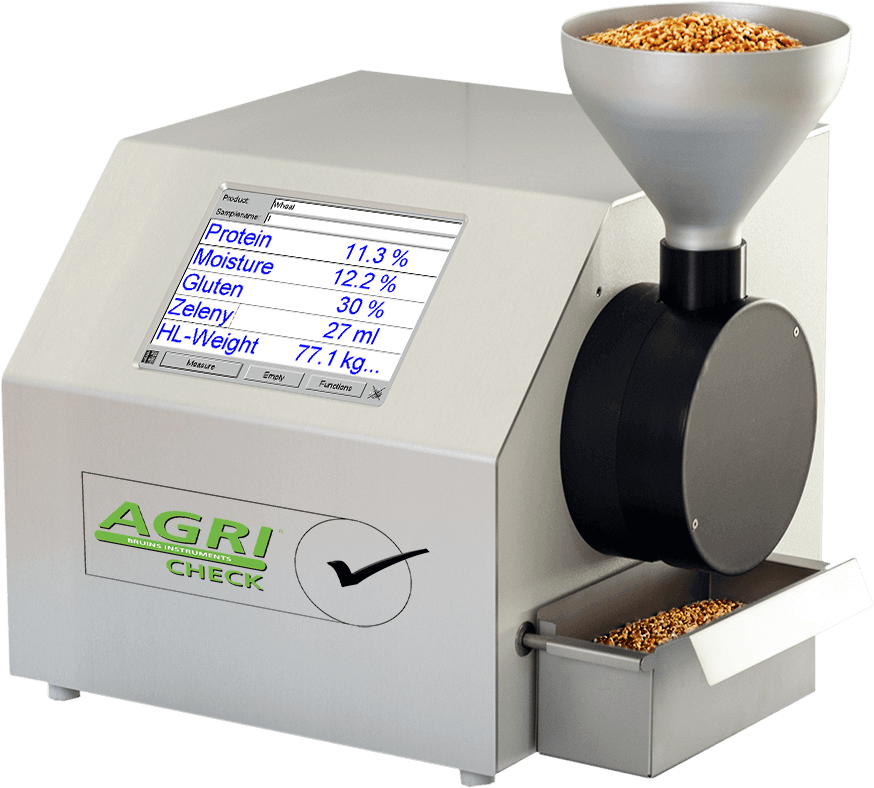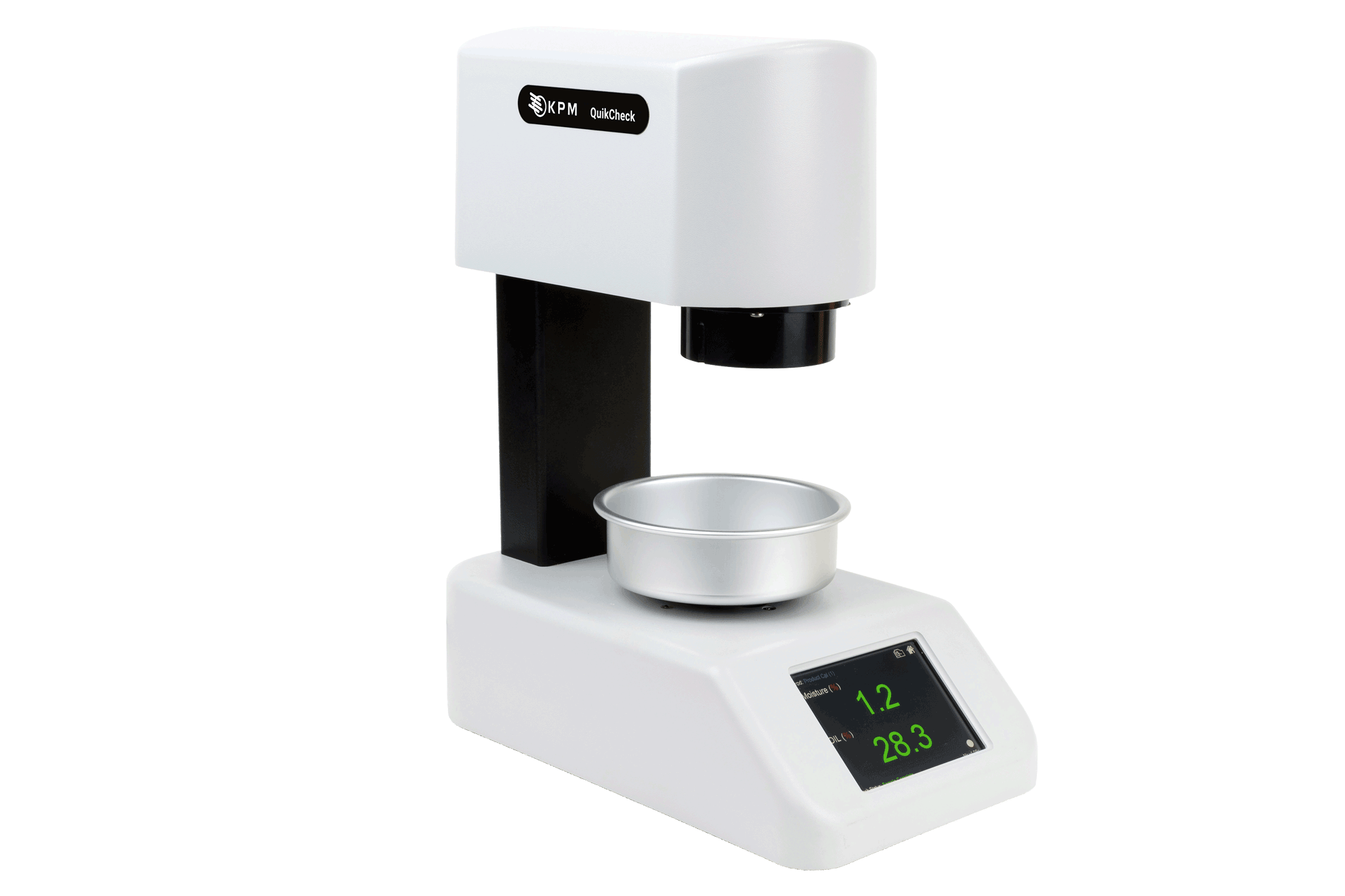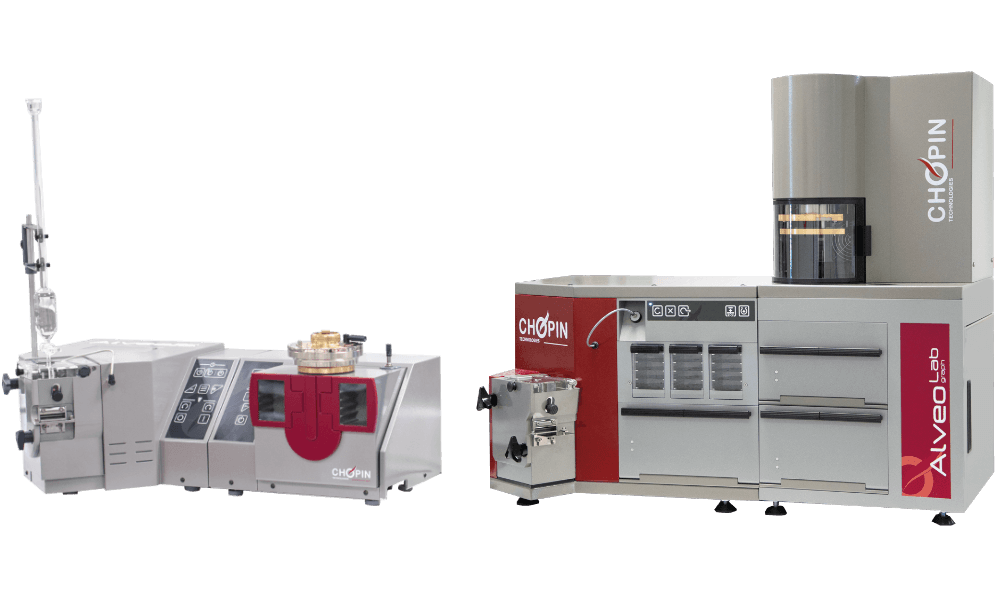Analysis of Croissants & Pastries

Quality Control Solutions for Croissants & Pastries
Often, croissants are mistaken for a bread product. Croissants are actually a type of pastry, and the main difference is that pastries are made from ingredients with a high fat content, giving them that flaky texture we enjoy at breakfast with coffee or during an afternoon snack with tea. KPM Analytics provides a wide range of solutions for measuring the quality of these products throughout the production process. Whether it's flour and dough analysis, moisture and fat content, or vision inspection, we can help solve your production challenges to meet quality requirements and ensure consumer satisfaction.

Moisture and Compositional Analysis of Recipe Ingredients
With the delicate balance of flour, water, and fat, pastry making methods must be consistent in order to get quality end products. Near-infrared (NIR) technologies can help bakers in the quality assurance lab or at-line to analyze moisture and fat content of incoming ingredients, dough samples during production, and the final product. Many trusted calibrations exist to help bakers measure critical parameters that can impact the quality of the product.
Ingredients Analyzed
Ingredients Analyzed
Flour
Specification compliance, quality control, cost control, recipe development, brand protection
Ash, gluten, moisture, starch, protein
Supplier's location, incoming ingredients, lab
Wheat flours, corn flour, spelt flour, buckwheat flour, rice flour, rye flour, gluten-free flours
Dough
Quality control, cost control, recipe development, production efficiency
Moisture, fat
Incoming ingredients, at-line, lab
All Types
Finished Product - Baked Goods
Specification compliance, quality control, cost control, recipe development, brand protection
Moisture
At-line, lab, Online
Butter
Quality control, specification compliance
Solids, fat, salt
After the churn
All types
Dry Yeast
Specification compliance, quality control, cost control, recipe development, brand protection
Moisture
Incoming ingredients, at-line, lab
All types


Functional & Rheological Analysis
Dough analysis technologies from KPM provide fast, simple, and intuitive solutions to help bakers simulate the baking process and collect critical data on dough behavior based on specific baking parameters or products, without having to spend extra time or waste product. This helps take the speculation out of flour or dough quality analysis and provides real assurance that every pastry will adhere to the important quality standards that your consumers demand.
Water Absorption
The characteristics of pastry flour, milled from soft wheats, differ from all purpose flour in that they tend to have less starch damage, lower absorption rate, and little mixing tolerance. It is very simple to measure water absorption directly using the KPM solutions outlined below.
Stickiness
This often occurs when starch damage or pentosan levels are too high and the protein levels are too low. Sticky dough causes process machine problems when dividing and pressing tortillas. Measure starch with the SDmatic 2, and protein levels with the SpectraStar XT-F NIR Analyzer.
Dough Consistency
Dough consistency depends on the amount of water added and the ability of the flour to absorb it. This consistency changes during mixing, reflecting the formation of the gluten network. For any given level of hydration, the consistency of the dough represents its firmness. This depends on the quantity and quality of the proteins, the level of starch damage, and the pentosans. Mixing consistency may be measured during mixing or after rolling. It is also possible to individually measure the factors responsible for consistency: proteins, damaged starch, and pentosans.
Mixing consistency may be measured by either the Mixolab or, after rolling by the Alveolab or AlveoPC. It is also possible to individually measure the factors responsible for consistency: proteins (NIR) and damaged starch (SDmatic 2).
Extensibility
Extensibility is directly measured using the Alveolab or AlveoPC. During the deformation of the ball, it stretches to where it reaches its breaking point, mainly influenced by the quality of the protein network. This corresponds to the "L" or "G" value on the Alveograph. Read more about extensibility here.
Elasticity
It takes a certain level of elasticity for the dough to be machinable. If the elasticity is too low, the dough won’t hold shape; if it is too high, the dough will tend to retract, which impacts the appearance of the finished product. Elasticity is measured directly and exclusively with the Alveolab or AlveoPC.
Volume
The volume of baguette is primarily influenced by the volume of CO2 produced by the yeast during fermentation. This volume is measured directly by the Rheo F4. The amount of CO2 produced depends on the intrinsic activity of the yeast and also the amount of simple sugars available. The latter is directly influenced by the activity of the amylases present in or added to the flour, which degrade a portion of the starch into simple sugars, usable by the yeast. Damaged starch, measured by the SDmatic 2, is more easily attacked by amylases. It therefore positively impacts the volume.
The volume is also dependent on the quality of the gluten network, measured with the Alveolab, AlveoPC, and the Mixolab. This determines the ability of the dough to develop during fermentation, and to retain the CO2 produced, measured with the Rheo F4.
Color
Baguettes are judged more or less appetizing by consumers according to their color. This parameter is essentially governed by the Maillard reaction, occurring during baking, which relates to the action of sugars on proteins. The more free sugars, the darker the crust will be. The color, as with the volume, is related to amylase enzyme activity and indirectly with the level of damaged starch (SDmatic 2).
Retrogradation
After baking, the starch will tend to partially recrystallize. This phenomenon is called retrogradation and explains why the products become hard (stale). The beginning of retrogradation is very easily measured with the Mixolab 2. Damaged starch has the effect of reducing the speed of retrogradation, it is measured with the SDmatic 2.

Vision Inspection of Pastries and Croissants
Croissants and pastries must be visually attractive to consumers, and bakers with consistent products and customer experiences will be the most successful. But analyzing quality based on manual inspection is not efficient and only gives subjective results. Vision inspection systems help bakers with quantifiable data about parameters such as size, shape, and color. And this analysis is done at full-speed production.
Product Types
- Croissants
- Puff pastries
- Filo pastries
- Pie Crusts

Measurement Capability
Dough
- Shape conformity
- Position on the belt
- Thickness
Filling
- Presence
- Location
- Amount
Finished Products
- 2D shape (diameter, length, width, curvature, area, shape conformity)
- 3D/height (various heights, peak height, volume, slope)
- Top color (dough color, avg bake color, dark spots, blisters)
- Bottom color (average color, dark spots)
- Quantity and distribution of toppings
Defects Detection Capability
Dough
- Folds, holes, rips, etc.
- Improper position or missing from the belt
Filling
- Over or under filled
- Missing filling
- Unwanted drips
Finished Products
- Flat or misshapen products
- Wrong size (too large or too small)
- Overcooked/dark products
- Spots (light, dark, foreign material on product surface)
- Topping defects (voids, improper coverage)

Additional Reading























